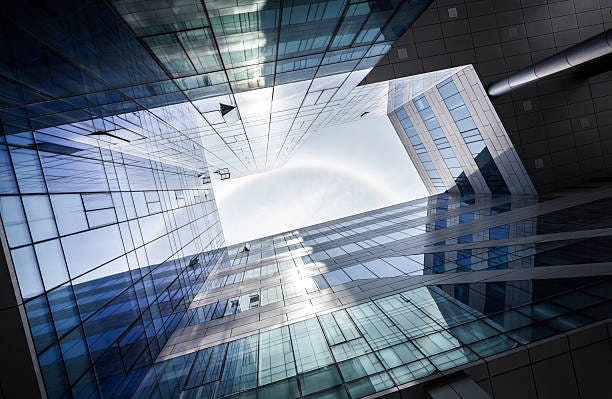Tackling the Halo Effect: Lightroom Editing Tips for Architectural Photography
Updated April 5, 2025
Achieving breathtaking results in photography editing often means overcoming intricate challenges like the notorious Halo Effect.
This phenomenon can be especially frustrating for photographers working on architectural gems, such as chapels and historic landmarks.
This guide will equip you with expert techniques in Adobe Lightroom Classic and Photoshop to eliminate unwanted halos while enhancing your architectural photography editing skills.
For more tips on mastering Lightroom, check out Crush the Halo Effect in Your Lightroom Classic Images.
What Is the Halo Effect?
The Halo Effect refers to those distracting bright or dark outlines that appear around objects in edited photos, typically along sharp edges.
While halos can occasionally be used creatively to emphasize certain elements, unwanted halos often detract from the overall quality of an image.
Architectural photography is particularly prone to this issue due to its sharp lines and intricate details.
Understanding how and why halos occur is the first step toward achieving professional-grade edits that truly showcase architectural beauty.
Why Does the Halo Effect Happen?
To effectively eliminate halos, it’s crucial to understand their causes.
Here are some common culprits:
Excessive Clarity and Sharpening: Overusing these settings can amplify halos around edges.
Masking Errors: Improper or imprecise masking creates unnatural transitions.
Layer Misalignment: Blurry edges from poorly aligned layers can lead to visible halos.
Overused Noise Reduction: Excessive smoothing can create unnatural outlines.
Unbalanced Color Correction: Insufficient adjustments can make halos more prominent.
For a deeper dive into avoiding common mistakes, read Common Photography Mistakes Beginners Should Avoid.
How to Eliminate Halos in Photos: Proven Strategies
Lightroom Editing Tips for Architectural Photography
Tame Clarity and Sharpening:
Dial back clarity and sharpening settings if halos become noticeable. Striking a balance between detail enhancement and natural-looking edges is key to eliminating halos in photos while preserving architectural details.Master the Dehaze Tool:
Lightroom’s Dehaze tool (found in the Develop module under Effects) adjusts contrast and haze levels, which often contribute to halos. Subtle tweaks with this tool can help refine your edits for a cleaner look.Refine Your Masks:
Precision is essential when working with masks. Use feathering, flow, and density adjustments to create smooth transitions without harsh outlines that cause halos.Opt for Graduated or Radial Filters:
Instead of brushes, try using Graduated or Radial Filters for localized adjustments. These tools allow smoother edits without introducing artifacts like halos along architectural edges.
For additional guidance on editing techniques, visit Editing Tips: Photoshop vs Lightroom.
Advanced Architectural Photography Editing Techniques in Photoshop
If Lightroom doesn’t fully resolve the issue, Photoshop offers advanced tools for tackling stubborn halos with precision:
Clone Stamp Tool:
The Clone Stamp tool lets you copy pixels from one area and paint them over another—perfect for removing halo artifacts near sharp edges. To use it effectively:Duplicate your background layer (CMD+J on Mac, Control+J on PC).
Select the Clone Stamp tool (S) and set its blend mode to “Darken.”
Hold ALT/OPTION to sample pixels from a clean area close to the halo, then paint over the affected area.
Healing Brush Tool:
Unlike the Clone Stamp tool, the Healing Brush blends sampled pixels with surrounding ones, making it ideal for seamless edits in areas with subtle textures or gradients.Patch Tool:
For larger halo areas, use the Patch Tool by drawing a selection around the halo and dragging it to a clean area of your image to replace pixels seamlessly.Defringe Function:
Photoshop’s Defringe function replaces fringe pixels with nearby colors, making it particularly effective for high-contrast edges in architectural photography editing.
Showcasing Your Edits: Contextualizing Images
When presenting your edited images online or in portfolios, ensure they highlight your technical mastery while telling a story about architectural beauty.
For example:
“This image demonstrates how reducing clarity settings in Lightroom minimized halo effects while preserving intricate chapel details.”
Adding descriptive captions like this not only enhances viewer engagement but also provides useful context about your editing process.
Final Thoughts
Editing is both an art and a science—embrace your creativity while honing your technical skills to achieve stunning results every time you edit a photo.
Mastering these techniques in Lightroom and Photoshop will help you not only conquer the Halo Effect but also improve your architectural photography editing.
For more inspiration on improving your craft, explore my Ultimate Photography Guide for Beginners.
I hope that helps,
Hakan.
Founder, PhotoCultivator.com


